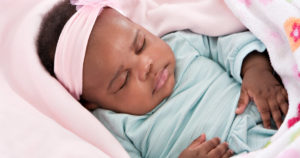Baby Safety Month this September
August 25, 2020 Since 1983, the Juvenile Products Manufacturers Association (JPMA) has been annually sponsoring Baby Safety Month. This year, the organization is reminding parents and caregivers the importance of selecting juvenile products that are infant and child-safe and providing other useful tips. The Centers for Disease Control and Prevention (CDC) report that unintentional injuries are the leading cause of death and injury among children. The good news is that by taking precautions when it comes to baby proofing, sleep and car seat safety, and preventing furniture tip-overs, we can each do our parts to keep these numbers down.
Since 1983, the Juvenile Products Manufacturers Association (JPMA) has been annually sponsoring Baby Safety Month. This year, the organization is reminding parents and caregivers the importance of selecting juvenile products that are infant and child-safe and providing other useful tips. The Centers for Disease Control and Prevention (CDC) report that unintentional injuries are the leading cause of death and injury among children. The good news is that by taking precautions when it comes to baby proofing, sleep and car seat safety, and preventing furniture tip-overs, we can each do our parts to keep these numbers down.
Baby Safety Basics
The JPMA recommends starting with the basics, which includes:
- Baby and child proofing. One way to baby proof is to get down on your hands and knees and to do your best to think like a little one. Baby proofing should be an ongoing process as children grow and develop
- Identify and address hazards around the home. Remedy any obvious hazards such as exposed electrical sockets, blind cords, and stairwells. Also be sure to keep an eye out for less obvious ones like hanging tablecloths, poisonous plants, and empty dishwashers
- Purchase products that are the safest option. New products that are in compliance with current safety standards are considered the safest for kids to use. If purchasing new products is not possible, be sure to use older models that are functional, not under recall, and generally undamaged
- Avoid secondhand products if possible. While it is not recommended to use secondhand products, if you are going to have them be sure that they are in the best condition possible
- Register products. When you register a product it establishes a direct line of communication and improves the chances of the manufacturer contacting you if there are any major product issues or recalls
Avoiding Furniture Tip-Overs
In just a two-year span, more than 12,000 children were injured seriously enough in furniture tip-over incidents that they needed emergency medical treatment. In fact, every 43 minutes a child is injured from a television or piece of furniture tipping over – and in some cases, the injuries they sustain are fatal. Luckily, there are plenty of ways to prevent tip-over injuries from happening. The Consumer Product Safety Commission (CPSC) recommends anchoring any top-heavy furniture items, televisions, and removing tempting objects (like TV remotes or toys) from the tops of dressers, TV’s, and any other types of large, heavy furniture.
Car Seat Safety
Every state has a law that requires the use of car seats. Car seats need to meet federal safety standards in order to reduce car accident and product-related injuries.
- Children should be put in rear-facing car seats until they max out height and weight requirements as per the manufacturer’s guidelines
- Once a child is too large for a rear-facing seat, place him or her in a forward-facing seat equipped with a harness
- When children are too large for forward-facing car seats with harnesses, they can be put in booster seats until they meet height and weight requirements for wearing seatbelts only
When you purchase a car seat, be sure to follow all the manufacturer’s instructions. The JPMA recommends avoiding car seats that are second hand or are past their expiration date, that have been in automobile accidents, or are missing the manufacturer’s label, date of manufacture, and/or model number.
Sleeping Safety
The CDC reports approximately 3,500 sudden unexpected infant deaths, or SUIDs, each year. The three most commonly reported types of SUIDs are sudden infant death syndrome (also known as SIDS), unknown causes, and accident strangulation and suffocation in bed. Ensuring that infants and children sleep safely is thought to be one of the most effective ways to prevent potentially deadly sleep-related hazards.
Direct from the American Academy of Pediatrics, here are just a few tips for promoting safe sleep for your baby or infant at home:
- Place infants in the supine position, which means putting them on their backs, until at least 1 year of age
- Place infants on a firm sleeping surface (like a mattress or a safety-approved crib) that is covered by a fitted sheet and that has no other bedding, pillows, or soft objects in the area
- Do not leave an infant to sleep on an armchair, in a sitting device, or on the sofa
- Room share, but do not share the bed. This means that infants can sleep in their parent’s room but on a separate sleeping surface. If possible, do this until your infant is 12 months old
- If you fall asleep while feeding your infant in bed, simply place the child back on a separate sleeping surface when you wake up
To read more of the AAP’s safe sleeping guidelines on its official website.
Our team at Galfand Berger hopes these tips from Baby Safety Month are helpful for our readers with young children.
If you have a legal question or concern about a juvenile product, someone at our firm can help. Contact a representative online now.
Philadelphia Products Liability Lawyers at Galfand Berger, LLP Representing Injured Victims Since 1947
Galfand Berger has offices located in Philadelphia, Bethlehem, Lancaster, and Reading, we serve clients throughout Pennsylvania and New Jersey. To schedule a consultation, call us at 800-222-8792 or complete our online contact form.
 Google Screened
Google Screened
